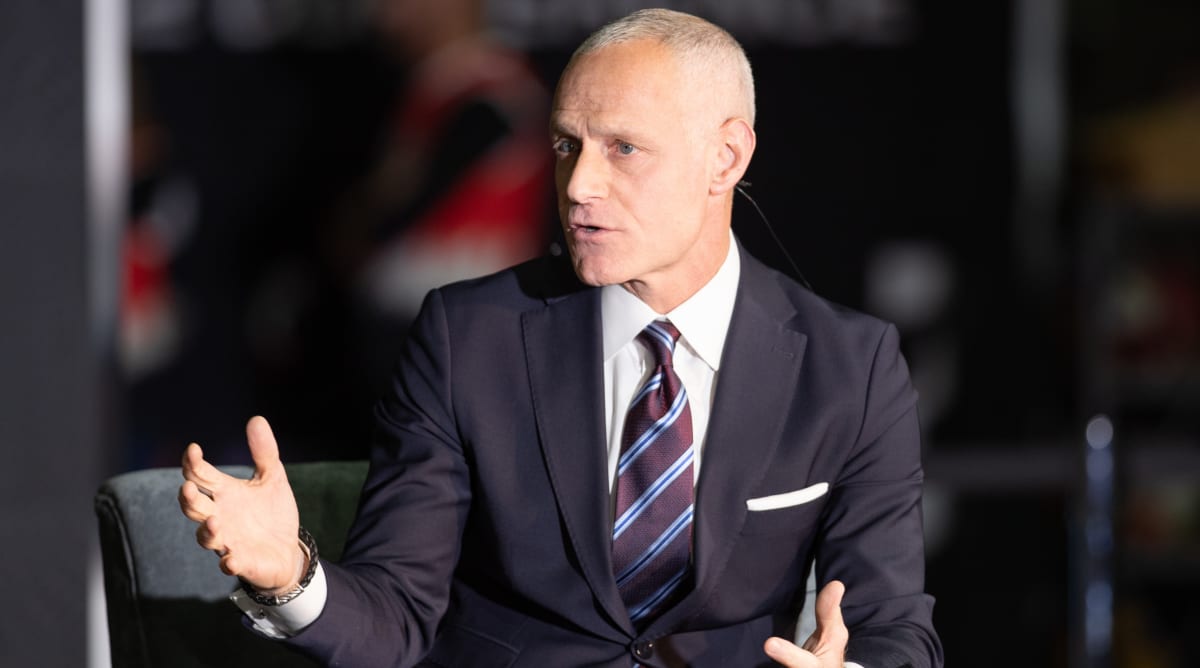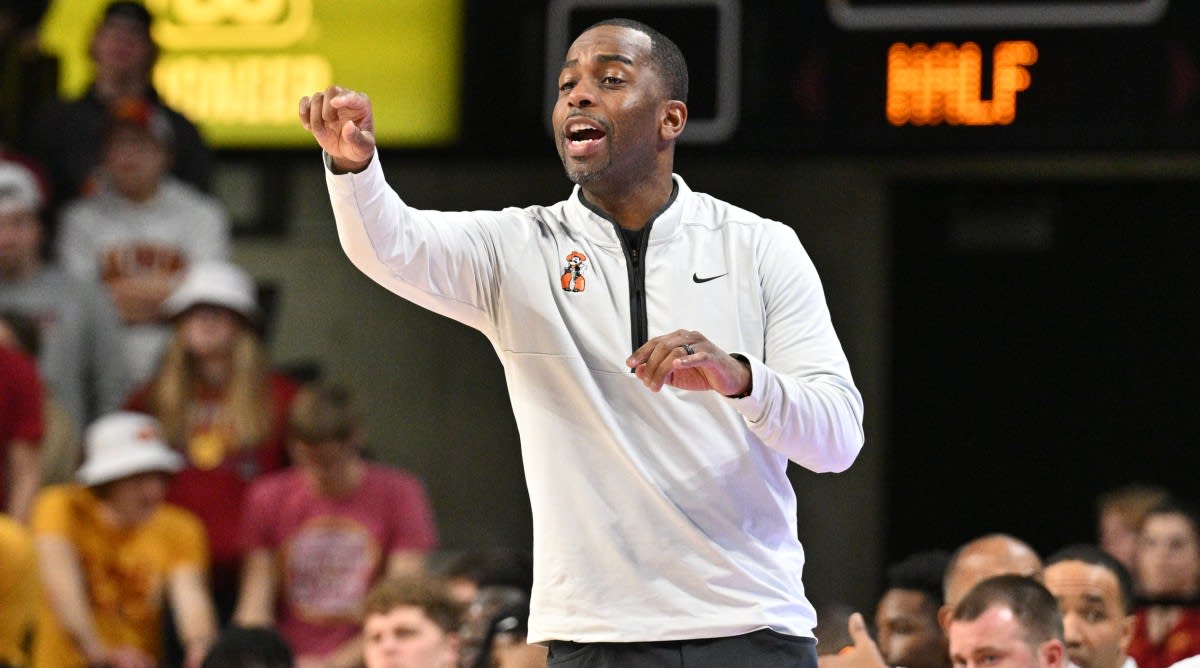What started as an ad campaign for the SEC in 2016 has become an iconic phrase in the college sports lexicon: It just means more. The four words have become a rallying cry for SEC football and the narrative that surrounds it: That nothing in college sports can top the teams, players and atmospheres produced on Saturdays in the fall.
The Big 12 may not have the catchphrase down yet, but its men’s basketball conference under commissioner Brett Yormark is developing a similar feel. The league that has topped the national conference rankings on KenPom in eight of the past 10 years and produced two of the last three national champions is “doubling down” on men’s basketball, per Yormark, even at a time when football has steered transformational decisions across the college sports landscape.
“I think basketball is undervalued, but it goes beyond just monetizing it,” Yormark said Tuesday at the league’s media days in Kansas City. “No sport connects better with culture than basketball. It’s also a great catalyst for international growth. Basketball is growing in popularity, and it resonates with younger audiences. It will continue to grow and will play a huge role in the future of our industry.”
Men’s College Hoops Preview: The Big 12 Gets a New Look

Kylie Graham/USA TODAY Sports
The Big 12’s aggressive expansion plans have already added a perennial power in Arizona for 2024–25, as well as a historically excellent Cincinnati program and a Houston program that has ranked in the top 15 of KenPom’s rankings in each of the past five seasons. And the league may not be done, with Yormark reportedly pitching the league’s presidents and athletic directors on adding Gonzaga to the league. UConn was also a reported target before the league successfully poached the Pac-12’s “Four Corners” schools. Yormark is clearly angling to consolidate as many top college basketball brands as he can, and the impact could go beyond strengthening what is already the sport’s best conference. Yormark has openly pondered the idea of the league packaging its football and basketball television rights separately in the league’s next TV deal, which would be a major shift in the media landscape for college sports conferences.
“In our recent TV negotiations… We gave ourselves some optionality, when you think about our back-end rights, not only to renew in the traditional format but also to potentially break apart basketball from football,” Yormark said. “I think my job as commissioner, our job as a conference office, is to explore all options and to further monetize what we do and to create value for our member institutions. If a situation presents itself where we can create more value by decoupling football from basketball, we’ll pursue it. But that doesn’t mean we’re going to do it.”
Whether or not Yormark pulls off either game-changing move, the league’s coaches don’t need much prodding to laud the league’s strength—again, in a very SEC football sort of way. Baylor’s Scott Drew opened his remarks Wednesday discussing the possibility of the league producing three or even all four Final Four teams in a season, a milestone he believes is “on the horizon.” Coaches dished on the elite atmospheres across the league, from historic ones like Allen Fieldhouse and Hilton Coliseum to Texas’s new arena and the new one Baylor plans to unveil in January.
“There’s no place that I go to in our league that I feel like ‘I think it’s going to be a snoozer in this building tonight,’” Oklahoma State’s Mike Boynton said. “It doesn’t matter what the record is, it doesn’t matter what time the game is. You go to Hilton Coliseum, we went there when they were really good and we went there when they didn’t win a game, and I felt the same about how engaged their fans were… There’s some leagues where you go to some places and you just know it’s not going to be a great environment, and I think that’s in most leagues except for this one.”
The Top 20 Newcomers in Men’s College Basketball

Jeffrey Becker/USA TODAY Sports
Recent rapid rebuilds have only made things tougher. Iowa State under T.J. Otzelberger and Kansas State’s Jerome Tang are recent examples of the beast growing stronger. Otzelberger took over in 2021 after a miserable 2–22 campaign, then promptly took the Cyclones to the Sweet 16 in his first season. Tang flipped a ninth-place team in the Big 12 into an Elite Eight squad in Year One on the job. The night-in, night-out intimidation that comes with coaching in this league is unmatched in the sport today.
“We had a head coaches meeting a while ago. It was kind of like [being] in a dog park,” Houston’s Kelvin Sampson said. “You’ve got two dogs walk by each other, kind of side-eye or little one starts yapping at the big one and they start sizing each other up. I was kind of sizing them all up. It used to be you could look at a few of those little dogs and go, ‘I can get that one, I can get that one, I can get that one.’ I ain’t seen nobody I can get in this conference. That’s the difference. They’re all German Shepherds, man. Where’s the Shih Tzus? Where’s the Chihuahuas at? Oh, that’s a Rottweiler. Oh, my God, that’s a Pit Bull.”
And by this time next year, at least two more top-15 teams—Houston and Arizona—from the last two years will have joined the fray, more than replacing the impending Oklahoma and Texas departures. If Yormark’s potential Gonzaga move comes together, make that three. And that’s a great sign for the health of college basketball as a whole, given how uncertain the league’s future looked two years ago in the wake of its two biggest programs’ shock departures for the SEC. College basketball having a tentpole conference investing heavily in the sport’s success is valuable, and Yormark seems intent on delivering just that.
“I think [Yormark’s] mindset is ‘We love basketball and we can be the best basketball conference, far and away,’” Boynton says. “When you talk about the teams we added… I think the separation is becoming even wider.”







